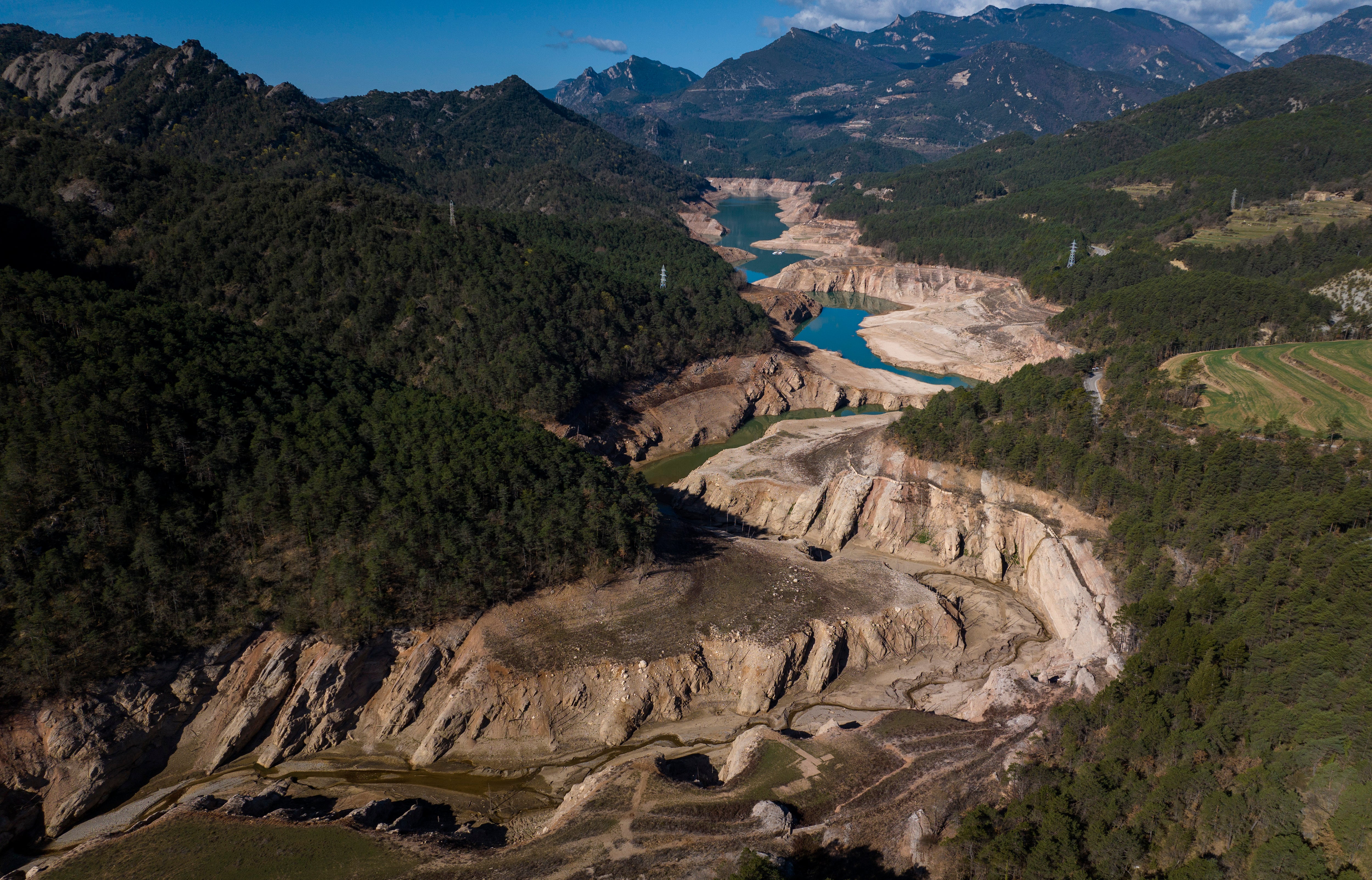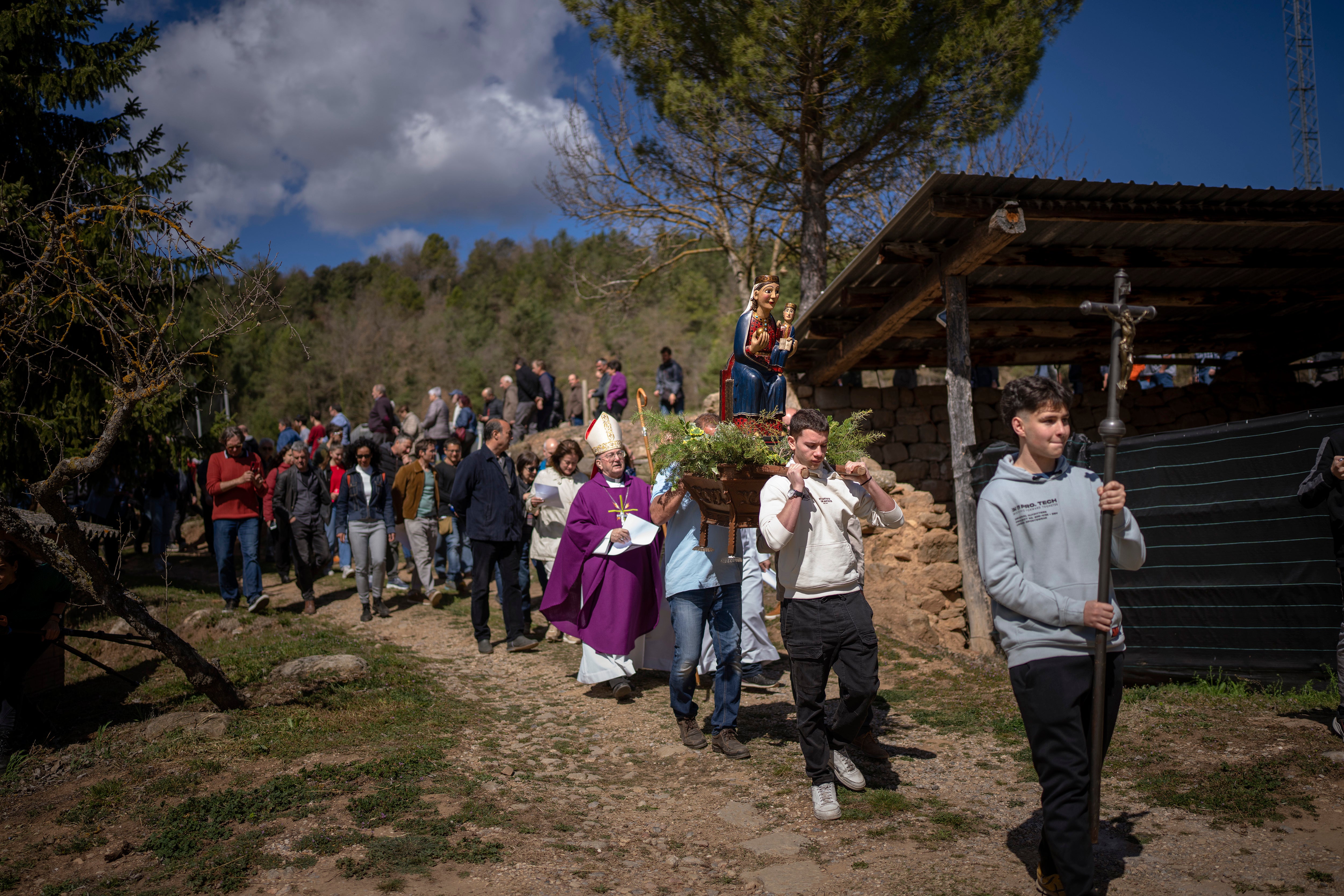
Spain’s northeastern region of Catalonia is suffering its worst drought in decades with some locals in the hardest-hit villages turning to ceremonial rain prayers for help.
Around six million people have had restrictions placed on water use after temperatures soared and reservoirs have dried up almost completely.
Wildfires are also forcing evacuations unusually early in the year.
At Sau Reservoir, next to the tiny village of Vilanova de Sau, the water level has dropped so low that it risks being contaminated by silt.

Local authorities have ordered the removal of fish to prevent them from dying and rotting.
While the reasons behind individual droughts are complex, the climate crisis is making droughts more frequent, severe, and prolonged in general.
This past winter has been one of the hottest and driest on record at a global level.
In Spain, long-term drought has been declared after three years of high temperatures and low rainfall. Summer 2023 is also expected to bring temperatures above normal again, according to forecasters.
The Sau Reservoir has become symbollic of Catalonia’s plight after the 11th century church of Sant Romà de Sau emerged as the water levels plummeted.
Local resident Agustín Torrent, 70, told the BBC that he had never seen the reservoir so empty.
“It’s sad when you’ve seen [the reservoir] full before,” he said.

“But that’s the way it is. It’s climate change and anyone who says it doesn’t exist, I don’t know what you can say to them.”
Last Sunday, in the rural village of l’Espunyola, north of Barcelona, farmers and parishioners gathered to attend a mass and ask the local statue, Our Lady of the Torrents, for rain.







